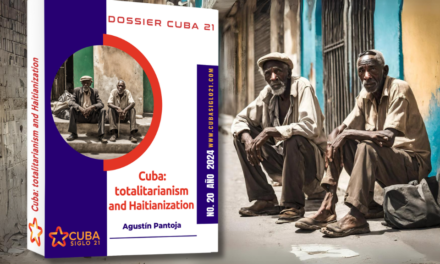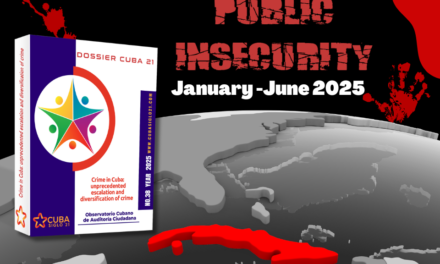Descargar informe completo en PDF (Español)
Download complete Report in PFD (English)
When in 2010 the Cuban government announced that it would begin a process of reforms for the transformation of the economy, one of the fundamental objectives was to stimulate domestic agricultural production to reduce food imports, whose value at that time exceeded 2 billion dollars annually and represented 80% of the total food consumed in the country
Within the agricultural sector reforms, increasing the production of meat products was one of the highest priority objectives. Meat products are among those that require the most resources for their importation. In 2010, just as the reform process began, the country imported 233,938 tons of meat products, representing an expenditure of US$291 million.
Seven years later, the results achieved show that the reforms failed to achieve the objective of decreasing food imports. In the specific case of meat products, imports in 2017 were 352,264 tons, which represented a growth of 50.6% and the expenditure for the purchase of these foods was 377.1 million dollars, which represented a growth of 29.6% with respect to 2010.
In 2017, 307,421 tons of frozen chicken were imported, which represented 87.27% of total imported meat products, rising 25.88 percentage points with respect to the value reached in 2010.
A revealing example: The experience of an investor interested in producing chicken in Cuba
The entry of MSMEs into the island’s economy has not meant an increase in domestic production in Cuban agriculture; on the contrary. Now less food is produced, and more is imported. It is obvious that the government’s strategy has not worked. The ideological taboos that govern the country’s governance to rule the generation of wealth prevented the elimination of bureaucratic obstacles and laws that hinder productive development.
In this sense, maintaining the state monopoly of ACOPIO as the yoke that regulates the country’s food production constitutes a real knot that holds back agricultural productive development, which MSMEs cannot and will not solve.
Statistics show that. In 2022, 344,928 tons of frozen chicken were imported, about 37,567 more than in 2017, and about 201,367 tons more than in 2010. Thus shows an upward growth in dependence on frozen chicken imports.
Conclusions
- The Cuban oligarchy grouped in GAESA does not have as its priority to solve the national food problems, but to increase corporate profit from the needs of the population in this aspect. To achieve this objective, they do not need to increase production, but rather to profit by importing food products that are later sold in the retail networks controlled by them at more than 240% at least of the value at which they were acquired abroad.
A concrete example was when they denied permission to the very advantageous investment proposal for more than $200 million dollars presented, during the so-called Thaw policy of President Obama, a leader company in chicken production in Central America and the Caribbean, which would have soon satisfied the national demand and generated a surplus for export to other markets whose access the company would have facilitated. That was not in the interest of the oligarchy. Buying frozen chicken from the “imperialist enemy” and selling it well above the cost of acquisition and transportation in the stores under GAESA’s monopolistic control was simpler and more profitable than producing it. In this case, importing meat instead of producing it avoided having to share large profits with the investor and losing monopoly control of the wholesale and retail marketing channels for chicken meat in the country.
Of all the meat products analyzed, the most critical situation today is that of chicken meat. In the last 12 years, demand has grown 104.84% and domestic production has decreased by 13%. As a result, in 2022 the country had to import 90.2% of the chicken consumed.
Had the investor’s proposal been accepted, the population would now have access to a guaranteed domestic chicken production at affordable prices and the national economy -not GAESA as a corporation- would be benefiting from the export of the surplus to other markets abroad, as was reflected in the feasibility plans that the investor had already prepared. - The most urgent reform that the country needs is in the productive sphere -especially in the agricultural sector- not in the import of goods. In addition, GAESA’s control of the distribution channels in the dollarized retail trade, including tourism, constitutes a barrier that impedes and hinders the productive development of the country. Its practically monopolistic position is based on imports, not on production. For this reason, there are no laws in the country that prioritize and stimulate productive development. GAESA is not interested in having a domestic competitor that would take away its market share and marginalize it from obtaining large profits.
- Twelve years after the initiation of economic reforms to update the Cuban economic model in 2011, the country has not managed to reduce the import of food products. Meat products increased their import level by 65.58% between 2010 and 2022. The monetary value of these imports increased by 131.20%, going from US$291.06 million invested in 2010 to US$672.96 million invested in 2022.
The lack of financial resources, the deterioration of production structures, technological backwardness and ACOPIO’s monopolistic and parasitic barrier on domestic producers continue to be the burden that undermines agricultural production in the country, including the production of meat products. - The burden that impedes the growth of agricultural production on the island is the state ownership of the means of production, the centralization of the economy, price controls, the Stalinist regime of forced sale to the state of most of its livestock and crops (Acopio system), the lack of freedom of peasants to export and import and to seek investors directly; in short, the lack of political will to make changes and the prevalence of ideological taboos on the economic regime.
For this reason, even with the implementation of the new MSMEs Law, the government has not been able to create opportunities to attract investment by nationals -residing in Cuba or abroad- or foreigners to help increase domestic production. The result has been a significant increase in the importation of meat products and a notable decrease in their production in the country. - The Cuban market continues to be unattractive. The precarious state of its industries, the gag laws that impose a productive straitjacket on the Cuban peasantry and entrepreneurs themselves, the government’s bulky foreign debt, high inflation, and the state’s monopolistic control over the main sectors of the economy, make the Cuban market one of the riskiest on the planet in which to invest.
There is no point in creating investment portfolios promoting millionaire projects to produce meat products, among others, if the market continues to be centrally controlled by the government and far from the possibilities of citizen’s free entrepreneurship.
The agricultural sector needs structural change to allow for an increase in domestic production, including meat production, especially chicken meat. It also needs a strategy to attract large-scale foreign investment to revitalize this industry.
Coda
In Cuba, the production of meat products is very low because the government “authorities” do not promote national development to address the needs of the people, but rather to favor the interests of the new GAESA oligarchy.
With the chronic shortage of food products in the country, with the large extensions of fertile land that are idle, with the large number of people who want to start a business and are able to generate wealth, it is worth asking why at this point the Cuban authorities have not yet created the internal legal conditions of entrepreneurial freedom that are essential to free the productive forces and attract the investment needed to develop this sector? The answer is simple, because they are pursuing their own interests, not those of society.
The current Cuban society is not of the humble, by the humble and for the humble as advertised in its propaganda. We are facing a system of the oligarchy, by the oligarchy and for the oligarchy. Besides, we are not in the presence of a productive oligarchy either, but a speculator and parasitic one.
Descargar informe completo en PDF (Español)
Download complete Report in PFD (English)







